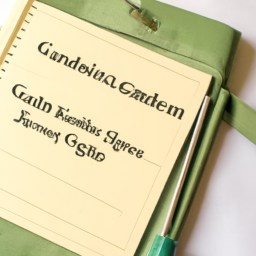Gardening Journal How To Keep it
How To Keep A Gardening Journal
How To Keep A Gardening Journal: An Introduction
Most gardeners have a profound understanding of the value of keeping a gardening journal. It's a useful exercise to document and track the progress of the plants in your garden, providing an invaluable record that can be casually referred to in either the present, or at any point in the future. Additionally, keeping a journal of your experiences will undoubtedly yield a higher level of success across the gardening season, regardless of your gardening skill level or experience.
What To Include In Your Gardening Journal
The contents of your journal should firstly provide a record of successes throughout the year, but should also document problems and challenges to allow you to turn them into learning experiences for the future. You'll want to include information about:
Seeds
Which seeds you've used, and the date that the seeds were planted;
Fertilization
How frequently your garden is fertilized, which type of fertilizer you use and, for each plant in your garden, the type of fertilizer used and the date it was applied;
Pest Control
In the event that any pest issues arose, what specific steps were taken to correct the issues and what products were used;
Maintenance
Any maintenance or repairs that may have been carried out, and the dates that these took place;
Harvest
When the harvest was taken, and in the case of tomatoes the length of time each plant took to produce any fruit.
Recording Information
The record keeping process should be easy to complete — so rather than long descriptions, try to keep to shorthand descriptions and short notes. Digital records may be easier and more efficient, but paper records provide a level of stability and can may more easily be stored than a computer of phone.
Visual Aids
It's particularly useful to use photographs or drawings to document the progression of your flowers and fruits. Additionally, if you're feeling artistic, you could try your hand at making a diagram, creating a plan for your garden or even sketching out a detailed chart.
Get Organized
Organization is critical if your journal is going to be effective, so be sure to structure the data into categories and sections. Also, be sure to allocate enough space for each day that you're working, as neatly summing up your progress and experience at the end of each day is a great way of capturing those little moments.
In Summary
Keeping a gardening journal is an invaluable tool for the serious gardener. Make sure to document the type of seeds, fertilization, pest control, and maintenance that have been undertaken throughout the season. Use photographs, diagrams, or sketches as visuals aids. And above all, stay organized, allocating adequate space for each day.
Following these simple steps should give you a useful record of what has been achieved in the garden, as well as a fountain of ideas or reminders for the next growing season.

Previous Page
Next Page
